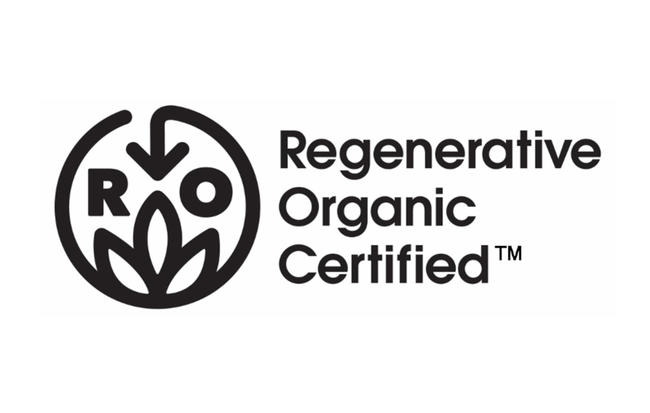
Understanding the New Regenerative Organic Certification

This high-bar standard is based on three pillars of soil health, animal welfare and social fairness, essentially combining all the most rigorous aspects of the organic, fair trade and animal welfare standards that currently exist to create a huge environmental and social impact. When it comes to soil health, “regenerative” is the key word. Moyer explained that not enough attention is being paid to the importance of soil health for not only agriculture but the environment and this new standard is an attempt to provoke change. While he considers the USDA Organic standard to be important, he wants ROC to be more in line with what “organic” represented prior to its regulation by USDA.
Elements of ROC already exist in USDA Organic such as no synthetic fertilizers/pesticides and no genetically modified organisms, but greater emphasis is being placed on promoting biodiversity and building soil organic matter through conservational tillage, cover crops, crop rotation and rotational grazing of livestock. Considering that USDA has recently withdrawn animal welfare regulations for their organic standard, ROC’s emphasis on animal welfare is significant. Some of the panelists are vegan and acknowledge the importance of livestock management for the promotion of soil health. They see the problem to be factory farming and the cruel conditions in which many animals are raised as livestock. They want respect for the life and death of these animals.
Under ROC, livestock are given “five freedoms,” which are freedom from discomfort, freedom from fear and distress, freedom from hunger, freedom from pain, injury and disease, and the freedom to express normal behavior. This means grass-fed, pasture-raised cattle, no concentrated animal feeding operations, suitable shelters, limited animal transport and rotational grazing. Beyond just providing a higher quality of life for the animals, it is also a more sustainable, considering that factory farming has created an agricultural monoculture where a majority of agriculture is devoted to feeding livestock. This has resulted in genetically modified crops and the overuse of pesticides that have created runoff into rivers and eventually the ocean, resulting in dead zones. For reference, the animal welfare component will encompass the best aspects of the Certified Humane, Animal Welfare Approved and Global Animal standards.
The final component is social fairness which will ensure that farm workers receive a living wage, proper working conditions, long term commitments and freedom of association. Farms under the ROC standard cannot use forced labor and must exercise transparency and accountability. NSF International will help to implement the standard. Currently, there is an open comment period and ROC is accepting applications for pilot farms to test the standards. From conventional to ROC, there is an estimated six years to fully transition, but having certifications such as USDA Organic, Non-GMO Project Verification, Transitional Organic as well as animal welfare and social fairness standards will speed up this process. There are also tiers within ROC: Bronze, Silver and Gold. ROC Bronze, for example, is an off-pack certification that can be claimed publically but not allowed on product labels. Annual recertification is required and after three years of Bronze, an operation must advance to Silver or Gold in order to make continued public claims. Silver level does allow product labeling and requires at least 50% fiber-to-food-producing land to be certified initially and must reach 75% by the fifth year. Gold level requires 100% fiber-to-food-producing land to be certified. Both Silver and Gold require annual recertification.

The editorial team at WholeFoods Magazine has decades of experiences reporting on natural products industry news, trends, and more. This national, monthly business-to-business magazine has been published continuously for nearly 40 years (the magazine was founded in 1977, and has been owned by Wainer Finest Communications since 1984). It is the longest-tenured media outlet of its kind in the natural products industry. The editorial focus at WholeFoods Magazine is, and always has been, on informing and educating members of the natural products industry.
The Magazine
Information
About Us
NOTE: WholeFoods Magazine is a business-to-business publication. Information on this site should not be considered medical advice or a way to diagnose or treat any disease or illness. Always seek the advice of a medical professional before making lifestyle changes, including taking a dietary supplement. The opinions expressed by contributors and experts quoted in articles are not necessarily those of the publisher or editors of WholeFoods.







